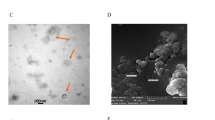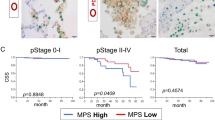Abstract
To observe the inflammatory response, differentiation of Th17/Treg subsets and apoptosis of lymphocytes, by regulating miR-126 in lymphocytes of septic rats. After using cecal ligation and puncture to establish sepsis model, miR-126 mimic and miR-126 inhibitor were used to transfect lymphocytes of septic rats in vitro and in vivo. ELISA was used to detect TNF-α, IL-6, IL-17, and IL-10, the differentiation of Th17 and Treg was measured by flow cytometry, and apoptosis of lymphocytes was observed by fluorescence microscope; the changes of caspase signaling pathway were detected by immunofluorescence, PCR, and Western blotting. The result show that the expression of miR-126 increased in sepsis. After overexpression of miR-126, the release of TNF-α, IL-6, and IL-17 decreased; the release of IL-10 increased; T lymphocyte subsets differentiated toward Treg; caspase signaling pathway weakened; and lymphocyte of apoptosis decreased compared with sepsis group. While, after inhibition of miR-126, the release of TNF-α, IL-6, and IL-17 increased; the release of IL-10 decreased; T lymphocyte subsets differentiated toward TH17; caspase signaling pathway enhanced; and lymphocyte of apoptosis increased compared with sepsis group. Taken together, regulation of miR-126 can alter the inflammatory response, differentiation of T lymphocyte subsets, and apoptosis of lymphocytes in septic rats.








Similar content being viewed by others
References
Osuchowski, M.F., C. Thiemermann, and D.G. Remick. 2017. Sepsis-3 on the block: What does it mean for preclinical sepsis modeling? Shock 47 (5): 658–660.
Patricio, P., J.A. Paiva, and L.M. Borrego. 2019. Immune response in bacterial and Candida sepsis. European Journal of Microbiology Immunology (Bp) 9 (4): 105–113.
Jensen, I.J., et al. 2018. Sepsis-induced T cell immunoparalysis: ihe ins and outs of impaired T cell immunity. Journal of Immunology 200 (5): 1543–1553.
Morrow, K.N., C.M. Coopersmith, and M.L. Ford. 2019. IL-17, IL-27, and IL-33: a novel axis linked to immunological dysfunction during sepsis. Frontiers in Immunology 10: 1982.
Denstaedt, S.J., B.H. Singer, and T.J. Standiford. 2018. Sepsis and nosocomial infection: paatient characteristics, mechanisms, and modulation. Frontiers in Immunology 9: 2446.
Cao, C., M. Yu, and Y. Chai. 2019. Pathological alteration and therapeutic implications of sepsis-induced immune cell apoptosis. Cell Death & Disease 10 (10): 782.
Ammer-Herrmenau, C., U. Kulkarni, N. Andreas, M. Ungelenk, S. Ravens, C. Hübner, A. Kather, I. Kurth, M. Bauer, and T. Kamradt. 2019. Sepsis induces long-lasting impairments in CD4+ T-cell responses despite rapid numerical recovery of T-lymphocyte populations. PLoS One 14 (2): e0211716.
Xu, J., Y. Feng, A. Jeyaram, S.M. Jay, L. Zou, and W. Chao. 2018. Circulating plasma extracellular vesicles from septic mice induce inflammation via MicroRNA- and TLR7-dependent mechanisms. Journal of Immunology 201 (11): 3392–3400.
Chen, J.X., X. Xu, and S. Zhang. 2019. Silence of long noncoding RNA NEAT1 exerts suppressive effects on immunity during sepsis by promoting microRNA-125-dependent MCEMP1 downregulation. IUBMB Life 71 (7): 956–968.
Deng, J.N., Y.Q. Li, Y. Liu, Q. Li, Y. Hu, J.Q. Xu, T.Y. Sun, and L.X. Xie. 2019. Exosomes derived from plasma of septic patients inhibit apoptosis of T lymphocytes by down-regulating bad via hsa-miR-7-5p. Biochemical and Biophysical Research Communications 513 (4): 958–966.
Yan, Y., Y. Lou, and J. Kong. 2019. MiR-155 expressed in bone marrow-derived lymphocytes promoted lipopolysaccharide-induced acute lung injury through Ang-2-Tie-2 pathway. Biochemical and Biophysical Research Communications 510 (3): 352–357.
Wang, C., B. Zhou, M. Liu, Y. Liu, and R. Gao. 2017. miR-126-5p restoration promotes cell apoptosis in cervical cancer by targeting Bcl2l2. Oncology Research 25 (4): 463–470.
Jiang, L., C. Tao, A. He, and X. He. 2014. Overexpression of miR-126 sensitizes osteosarcoma cells to apoptosis induced by epigallocatechin-3-gallate. World Journal of Surgical Oncology 12: 383.
Zhou, Y., P. Li, A.J. Goodwin, J.A. Cook, P.V. Halushka, E. Chang, and H. Fan. 2018. Exosomes from endothelial progenitor cells improve the outcome of a murine model of sepsis. Molecular Therapy 26 (5): 1375–1384.
Razazi, K., F. Boissier, M. Surenaud, A. Bedet, A. Seemann, G. Carteaux, N. de Prost, C. Brun-Buisson, S. Hue, and A. Mekontso Dessap. 2019. A multiplex analysis of sepsis mediators during human septic shock: a preliminary study on myocardial depression and organ failures. Annals of Intensive Care 9 (1): 64.
Nejsum, L.N., A. Piec, M. Fijak, C.V. Ernstsen, D. Fischer, T.J. Maier, R. Kinscherf, R. Hofmann, and A. Urbschat. 2019. Systemic LPS induces toll-like receptor 3 (TLR3) expression and apoptosis in testicular mouse tissue. Cell and Tissue Research 378 (1): 143–154.
Deng, J., X.Q. Yu, and P.H. Wang. 2019. Inflammasome activation and Th17 responses. Molecular Immunology 107: 142–164.
Lewkowicz, N., M.P. Mycko, P. Przygodzka, H. Ćwiklińska, M. Cichalewska, M. Matysiak, K. Selmaj, and P. Lewkowicz. 2016. Induction of human IL-10-producing neutrophils by LPS-stimulated Treg cells and IL-10. Mucosal Immunology 9 (2): 364–378.
Costa, R.T., O.R. Araújo, M.K.C. Brunialti, M.S.C. Assunção, L.C.P. Azevedo, F. Freitas, and R. Salomão. 2019. T helper type cytokines in sepsis: time-shared variance and correlation with organ dysfunction and hospital mortality. The Brazilian Journal of Infectious Diseases 23 (2): 79–85.
Qin, Y., L. Cao, and L. Hu. 2019. Sirtuin 6 mitigated LPS-induced human umbilical vein endothelial cells inflammatory responses through modulating nuclear factor erythroid 2-related factor 2. Journal of Cellular Biochemistry 120: 11305–11317.
Wang, F., J. Zhang, and G. Zhou. 2020. The mTOR-glycolytic pathway promotes T-cell immunobiology in oral lichen planus. Immunobiology 225: 151933.
Brinkhoff, A., A. Sieberichs, H. Engler, S. Dolff, S. Benson, J. Korth, M. Schedlowski, A. Kribben, O. Witzke, and B. Wilde. 2018. Pro-inflammatory Th1 and Th17 cells are suppressed during human experimental endotoxemia whereas anti-inflammatory IL-10 producing T-cells are unaffected. Frontiers in Immunology 9: 1133.
Gupta, D.L., S. Bhoi, T. Mohan, S. Galwnkar, and D.N. Rao. 2016. Coexistence of Th1/Th2 and Th17/Treg imbalances in patients with post traumatic sepsis. Cytokine 88: 214–221.
Nadeem, A., N.O. al-Harbi, S.F. Ahmad, M.M. al-Harbi, A.S. Alhamed, A.S. Alfardan, M.A. Assiri, K.E. Ibrahim, and H. Albassam. 2020. Blockade of interleukin-2-inducible T-cell kinase signaling attenuates acute lung injury in mice through adjustment of pulmonary Th17/Treg immune responses and reduction of oxidative stress. International Immunopharmacology 83: 106369.
Sun, J.K., W.H. Zhang, W.X. Chen, X. Wang, and X.W. Mu. 2019. Effects of early enteral nutrition on Th17/Treg cells and IL-23/IL-17 in septic patients. World Journal of Gastroenterology 25 (22): 2799–2808.
Zhang, H., F. Meng, and S. Lu. 2020. Risk factors of sepsis following pancreaticoduodenectomy based on inflammation markers and clinical characteristics. ANZ Journal of Surgery 6 (3): 15791.
Lei, C.S., J.M. Wu, P.C. Lee, T.C. Kuo, P.D. Chen, Y.C. Hou, S.L. Yeh, and M.T. Lin. 2019. Antecedent Administration of Glutamine Benefits the homeostasis of CD4(+) T cells and attenuates lung injury in mice with gut-derived polymicrobial sepsis. JPEN Journal of Parenteral and Enteral Nutrition 43 (7): 927–936.
Guo, J., W. Tao, D. Tang, and J. Zhang. 2017. Th17/regulatory T cell imbalance in sepsis patients with multiple organ dysfunction syndrome: attenuated by high-volume hemofiltration. The International Journal of Artificial Organs 40 (11): 607–614.
Hotchkiss, R.S., K.C. Chang, P.E. Swanson, K.W. Tinsley, J.J. Hui, P. Klender, S. Xanthoudakis, S. Roy, C. Black, E. Grimm, R. Aspiotis, Y. Han, D.W. Nicholson, and I.E. Karl. 2000. Caspase inhibitors improve survival in sepsis: a critical role of the lymphocyte. Nature Immunology 1 (6): 496–501.
Bai, Y., W. Lu, N. Han, H. Bian, and M. Zhu. 2014. Functions of miR126 and innate immune response. Yi Chuan 36 (7): 631–636.
Chen, C., L. Zhang, H. Huang, S. Liu, Y. Liang, L. Xu, S. Li, Y. Cheng, and W. Tang. 2018. Serum miR-126-3p level is down-regulated in sepsis patients. International Journal of Clinical and Experimental Pathology 11 (5): 2605–2612.
Wang, H.F., Y.Q. Wang, L. Dou, H.M. Gao, B. Wang, N. Luo, and Y. Li. 2019. Influences of up-regulation of miR-126 on septic inflammation and prognosis through AKT/Rac1 signaling pathway. European Review for Medical and Pharmacological Sciences 23 (5): 2132–2138.
Zhou, Y., P. Li, A.J. Goodwin, J.A. Cook, P.V. Halushka, E. Chang, B. Zingarelli, and H. Fan. 2019. Exosomes from endothelial progenitor cells improve outcomes of the lipopolysaccharide-induced acute lung injury. Critical Care 23 (1): 44.
Tian, M., et al. 2018. Changes in circulating microRNA-126 levels are associated with immune imbalance in children with acute asthma. International Journal of Immunopathology and Pharmacology 32: 2058738418779243.
Li, Y., J. Song, Z. Xie, M. Liu, and K. Sun. 2020. Long noncoding RNA colorectal neoplasia differentially expressed alleviates sepsis-induced liver injury via regulating miR-126-5p. IUBMB Life 72 (3): 440–451.
Jiang, B., Y. Tang, H. Wang, C. Chen, W. Yu, H. Sun, M. Duan, X. Lin, and P. Liang. 2020. Down-regulation of long non-coding RNA HOTAIR promotes angiogenesis via regulating miR-126/SCEL pathways in burn wound healing. Cell Death & Disease 11 (1): 61.
Acknowledgments
We acknowledge the financial support of the Natural Science Research Projects in Universities of Anhui Province (KJ2018A0244) and Natural Science Research Projects in Universities of Anhui Province (KJ2019A0351).
Author information
Authors and Affiliations
Corresponding author
Ethics declarations
Competing Interests
The authors declare that they have no conflicts of interests.
Additional information
Publisher’s Note
Springer Nature remains neutral with regard to jurisdictional claims in published maps and institutional affiliations.
Rights and permissions
About this article
Cite this article
Zou, Q., Yang, M., Yu, M. et al. Influences of Regulation of miR-126 on Inflammation,Th17/Treg Subpopulation Differentiation, and Lymphocyte Apoptosis through Caspase Signaling Pathway in Sepsis. Inflammation 43, 2287–2300 (2020). https://doi.org/10.1007/s10753-020-01298-7
Published:
Issue Date:
DOI: https://doi.org/10.1007/s10753-020-01298-7




